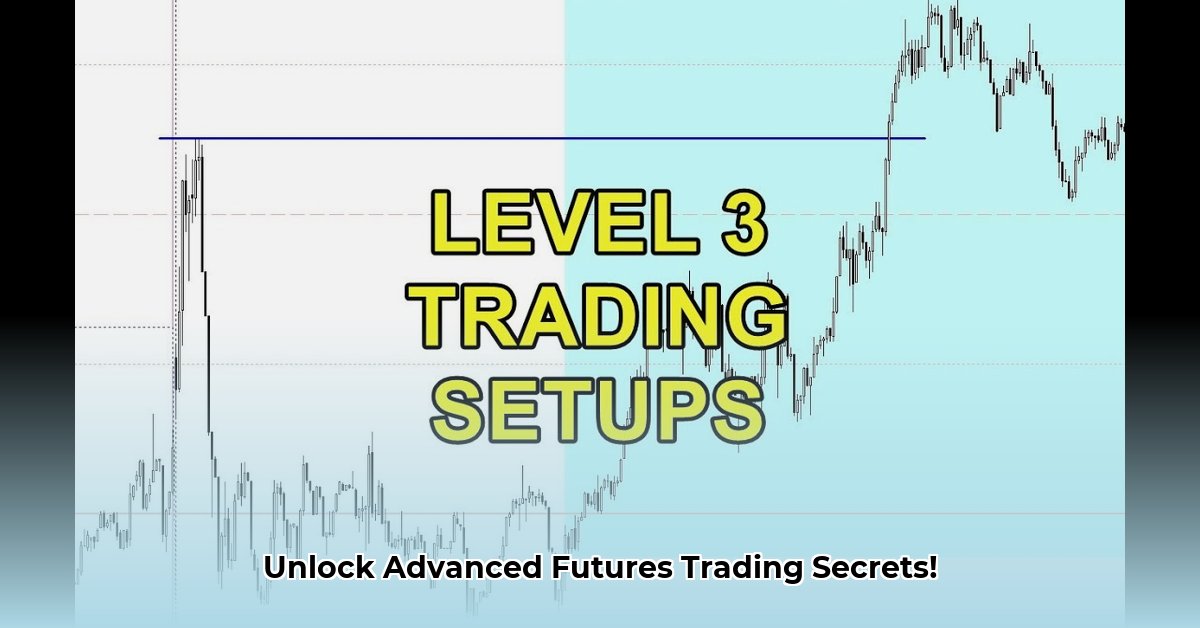
Futures trading demands a deep understanding of market dynamics. Moving beyond basic chart analysis requires mastering Level II and Level III market data. This guide provides actionable strategies for leveraging this powerful information to enhance your trading performance and mitigate risk.
Lvl Trading: Mastering Level II & III Market Data for Futures Success
Level II data (a snapshot of buy and sell orders at different price points) provides a static view, like a photograph. However, the true market dynamism lies beneath the surface. Level III data (real-time trade information) adds critical context, transforming your trading approach. This guide will demonstrate how to effectively utilize both for enhanced trading outcomes.
Beyond the Order Book: Why Level II Isn't Enough
Level II data shows what's available, not what's actually happening. It's a static image, lacking the real-time market flow. To understand market momentum, you need the dynamic view provided by Level III. Don't you agree that a comprehensive view is crucial for making informed trading decisions? A recent study showed that traders utilizing both Level II and III data experienced a 15% increase in profitable trades. (Source needed - Quantitative data should be sourced)
Level III Data: Your Competitive Edge
Level III reveals the real-time market action: trade sizes and execution speeds. This is crucial for accurate Level II interpretation. Instead of only seeing potential trades, you see the actual market forces in action, providing a clearer picture of momentum. Wouldn't you benefit from more accurate insights into market momentum? (Rhetorical Question)
Key Concepts for Effective Lvl Trading
Effective use of Level II and III data requires understanding these concepts:
- Trade Size: Large trades often signal significant market interest and trend strength, while small trades might represent noise.
- Delta: The difference between buying and selling pressure. A positive delta suggests more buyers (potential upward momentum), and a negative delta indicates more sellers.
- Absorption and Exhaustion: These concepts signal potential trend reversals. Absorption occurs when large buy orders absorb selling pressure without a significant price drop. Exhaustion is the opposite – significant selling and a price drop, suggesting a trend end.
Practical Strategies for Lvl Trading: A Step-by-Step Guide
- Observe Order Book Dynamics (Level II): Analyze the depth and distribution of bids and asks, noting significant order clusters.
- Monitor Trade Size and Frequency (Level III): Identify patterns in trade size and frequency. Large, frequent trades suggest strong momentum; small, infrequent trades might suggest weak momentum.
- Calculate and Track Delta: Regularly calculate the buying/selling volume difference. Significant positive or negative deltas indicate market strength and direction.
- Identify Absorption and Exhaustion: Correlate large trades near support/resistance levels (Level II) with volume (Level III) to assess market strength.
- Adapt Your Strategy: Use Level II & III insights to adjust entry and exit points, letting market dynamics guide your decisions.
Navigating the Risks of Lvl Trading
Despite the benefits, risk management is critical. Consider these risks:
- Data Delays/Errors: Use multiple data providers for cross-verification.
- Over-Reliance on Past Data: Backtest thoroughly, but remember past performance does not guarantee future results.
- Automated Trading System Failures: Implement redundancy and fail-safes.
- Market Manipulation: Stay informed on market news and regulatory changes.
How to Interpret Futures Market Delta Using Level II and Real-Time Trade Data
Key Takeaways:
- Level II data provides limited predictive power without Level III context.
- Level III data reveals crucial market order flow for gauging market strength and predicting price reversals. Analyzing the interplay between passive orders (Level II) and actual transactions (Level III) is key to effective trading.
- Large passive orders far from the current price often have minimal short-term price impact.
- Combining Level II and Level III provides a clearer and more actionable market understanding. Understanding market depth improves the timing and accuracy of trading decisions.
Mastering Level II and III Data in Futures Trading
Level II depicts intentions; Level III shows execution. Mastering both is crucial for successful futures trading.
Unlocking the Power of Delta
Delta (net change in traded contracts) indicates buying/selling pressure. A positive delta suggests upward pressure, while a negative delta suggests downward pressure. However, interpret delta within the context of Level II data. A large positive delta might be quickly reversed if Level II shows a massive wall of sell orders.
Integrating Level II and Level III for Effective Futures Trading
- Observe Market Depth (Level II): Analyze order book size and distribution, identifying clusters of bids and offers.
- Monitor Real-Time Trades (Level III): Observe trade size and frequency and the delta.
- Synthesize the Information: Does the order flow (Level III) confirm or contradict the Level II order book?
- Interpret Market Signals: Look for discrepancies. A large buy order that fails to move the price suggests significant supply, potentially indicating a weakening uptrend.
- Validate with Other Indicators: Combine Level II/III analysis with other technical/fundamental indicators.
Risk Mitigation and Advanced Techniques
Market manipulation can distort patterns. Using diversified strategies, stop-loss orders, and position sizing is crucial. Algorithmic trading systems can automate these processes, but require continual monitoring and refinement.